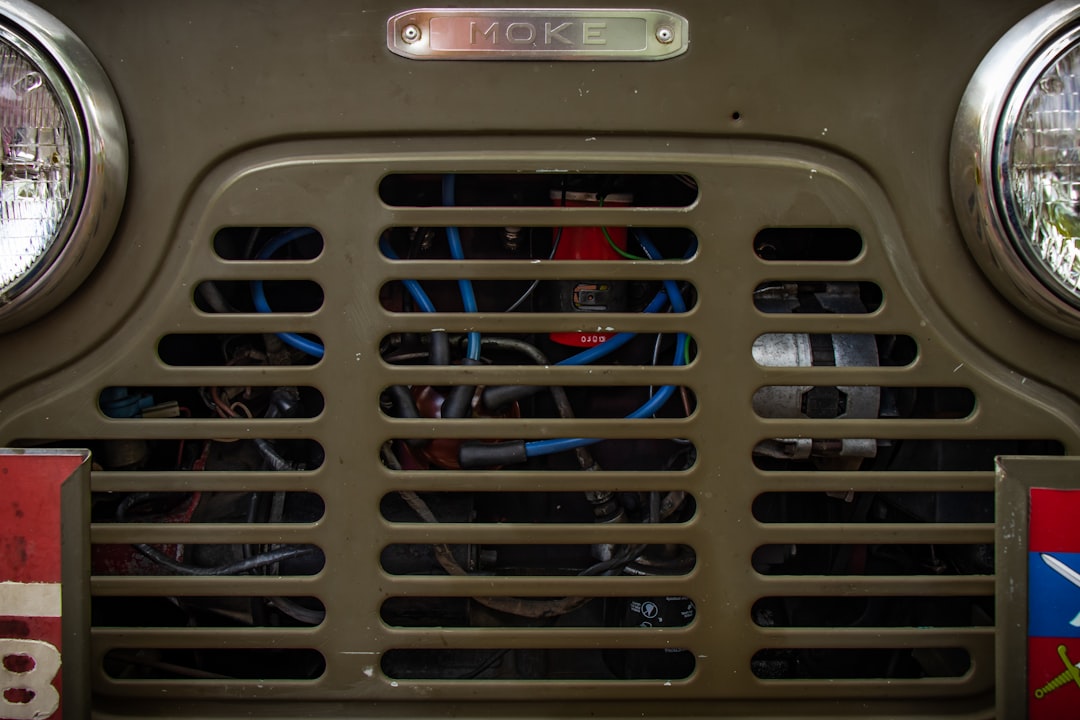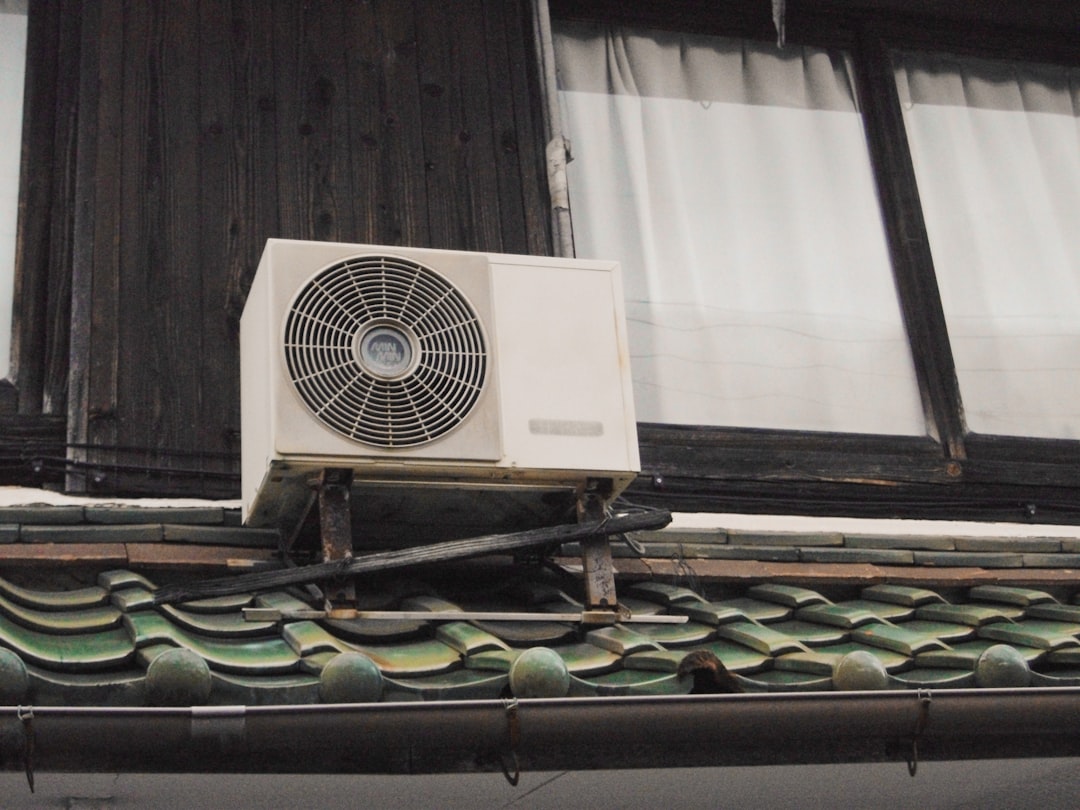

Engage prospects with a scan and streamline customer engagement with FREE QR code marketing tools by Sona – no strings attached!
Create a Free QR CodeFree consultation

No commitment

Engage prospects with a scan and streamline customer engagement with FREE QR code marketing tools by Sona – no strings attached!
Create a Free QR CodeFree consultation

No commitment
QR codes have evolved from a simple utility into a strategic powerhouse, seamlessly connecting physical interactions with digital marketing outcomes. For air conditioning contractors, bridging the gap between offline marketing efforts and online lead capture is especially challenging. Trade publications outline best practices to close that gap. Whether relying on door hangers, print ads, or service invoices, it can be difficult to efficiently funnel prospects into digital systems, often resulting in missed opportunities and untracked interactions.
QR codes offer a frictionless, app-free method for customers to move from brochures, technician uniforms, and signage directly into appointment booking forms, online reviews, or maintenance reminders. When printed materials do not guide next steps, potential leads may remain unclaimed, which leaves revenue on the table. Strategically using QR codes not only increases service requests and streamlines customer support but also provides visibility into offline engagement points, enhancing the experience for both customers and field technicians. For collecting and routing ratings efficiently, use QR codes to drive Google reviews.
By using modern, data-driven QR code solutions, HVAC businesses gain access to deeper customer insights, automated lead nurturing, and seamless integration with CRM and advertising workflows. These advancements help capture high-value prospects who might not otherwise engage, prevent lost follow-up opportunities, and track each touchpoint’s contribution to business growth. See Sona QR’s product overview for a look at dynamic codes, analytics, and integrations. The following guide explores how QR codes can help air conditioning contractors support technicians, convert offline engagement, and optimize marketing efforts for lasting impact.

QR codes bridge the gap between field service delivery and digital engagement, turning technician visits and print touchpoints into actionable opportunities. For sector-specific tactics, explore Sona QR’s HVAC QR strategies. Air conditioning contractors can use QR code solutions to transform every service interaction into a measurable conversion path while reducing paperwork and administrative overhead for technicians.
Replacing analog processes with scan-to-action workflows is where the impact compounds. Paper brochures, handwritten job notes, and manual follow-up calls can be replaced with scannable entry points that collect data instantly and trigger automated next steps. The result is less friction for customers, fewer clerical tasks for technicians, and more accurate attribution across your marketing and operations.
Employing platforms designed for contractor needs ensures every field interaction is an entry point to lead capture, improving efficiency and measurable results. With a centralized tool, operations leaders can deploy codes, control destinations, and measure outcomes without burdening technicians or dispatch.

Capturing leads and measuring campaign effectiveness is a challenge, especially from offline campaigns where intent signals are missed. Door hangers, yard signs, magnets, and van wraps generate attention, yet that interest can fade quickly if customers must type a URL or make a phone call outside business hours. QR codes provide a fast path to engagement that matches how customers prefer to act: point, scan, and submit. As HPAC Magazine notes, QR-driven journeys help HVAC teams convert intent at the exact moment of need.
The speed advantage is particularly valuable in HVAC where problems are urgent and seasonal peaks are intense. When a homeowner sees a maintenance reminder magnet on the fridge, a scannable code can turn a passing thought into a booked tune-up in less than a minute. During summer heat waves or winter cold snaps, QR codes on invoices, equipment stickers, and direct mail help route high-intent customers to the right forms and triage queues without waiting on hold.
These connections, layered onto everyday touchpoints, turn each asset into a measurable revenue opportunity. When your field team and your printed materials guide customers to scan, you capture intent that would otherwise disappear, build a cleaner pipeline, and document the true impact of offline marketing.

Contractors often struggle to move interest from offline to actionable digital records. Modern QR code formats provide practical solutions that align with the most common HVAC touchpoints and workflows. Choose the format based on the desired action and the customer’s context.
Combine dynamic codes for content flexibility with static codes for evergreen information to optimize your campaigns. For example, pair a static vCard on a magnet with a dynamic link on a door hanger that rotates between tune-up offers in spring, emergency repair priority lists in summer, and IAQ promotions in fall.

Missing conversion touchpoints in appointment cards, invoices, or reminders means lost prospects. The simplest way to unlock growth is to place QR codes at the exact moments when customers are most motivated to act. Start where you already invest in quality printing and field presence, then upgrade those materials to scannable entry points.
Appointment confirmations, post-service invoices, and equipment stickers are high-intent moments where customers are thinking about their systems and next steps. Add clear calls to action like “Scan to book your fall tune-up” or “Scan to register your warranty now.” Seasonal direct mail and neighborhood canvassing are also ripe for attribution: unique QR codes let you track which routes, offers, and messages resonate best. Use localized direct mail to attribute scans by route and promotion.
Focusing on these high-impact touchpoints maximizes conversions and builds a valuable data asset for future marketing. Over time, scan analytics will highlight which placements and messages drive the highest revenue per impression, so you can reinvest where results are strongest.

Missing or late detail capture results in slow follow-up and lost business. QR codes unlock efficient workflows that meet customers where they are and give technicians simple tools to capture intent during and after service.
Equipment registration is a prime example. Technicians attach a QR sticker to each installed unit so homeowners can instantly register warranties by scanning and completing a prefilled form. This reduces errors, shortens the registration cycle, and reduces the burden on the office to chase paperwork.
Real-time service feedback is another high-yield use case. QR codes on invoices, field slips, or technician badges prompt customers to rate their experience and share a review. Since the request happens while the technician is still on-site or immediately after, response rates and review quality improve. Many teams build quick surveys in Google Forms, then route satisfied customers to their preferred review sites.
Instant appointment scheduling can be deployed across flyers, door hangers, and postcards. Scans route prospects to a streamlined booking page that preselects service type based on the campaign, which reduces abandonment and speeds up the path to a confirmed appointment. For more inspiration, here are 7 ways contractors apply QR codes across touchpoints.
These applications streamline operations, improve satisfaction, and power lead generation more effectively than analog methods. They also create a clean data trail you can feed into your CRM, which supports retargeting, referral programs, and proactive service reminders.
Contractors often cannot distinguish truly interested leads from casual website visitors, which leads to wasted advertising and missed sales cycles. QR scans are high-intent signals since they occur at physical touchpoints that correlate with need. By deploying unique codes across offline assets, you can segment audiences based on context and serve follow-ups that match what customers want next.
The key is to treat every scan as a tagged event that adds intelligence to your CRM profile. Knowing whether a scan came from a door hanger in a specific neighborhood, an invoice for an install, or a maintenance sticker on a five-year-old unit lets you tailor your messaging with relevance and timing.
With this structure, your advertising becomes more precise and your follow-ups more relevant. Scanners of maintenance magnets can be invited to schedule a recurring plan; invoice scanners can receive review prompts and referral incentives; door-hanger scanners can see neighborhood testimonials and limited-time discounts that match the campaign creative. For activation tactics, see Sona’s Playbook on intent-driven retargeting.
Connecting disparate channels is hard for contractors. QR codes unify offline and online marketing by giving every printed or physical asset a one-scan path into your digital funnel. They reduce friction at the exact moment a customer is motivated and they make formerly untrackable placements measurable.
In practice, QR codes act like connective tissue across your marketing. A brochure at a home show can drive to a quote form with promotions tailored to that event. A direct mail piece can link to a personalized landing page that mirrors the headline the recipient just read. A TV spot or digital signage in a supply house can invite contractors or homeowners to download a guide or book a consultation in seconds.
Centralizing QR management ensures all scans are tracked and integrated into CRM workflows for better campaign visibility and results. A platform built for marketers and operators lets you govern brand consistency, renew promotions across placements, and keep data clean without burdening the field team.
Start by defining a clear goal that maps to a measurable business outcome. Examples include collecting reviews after service, driving immediate schedule requests from door hangers, registering warranties automatically at install, or enrolling customers into maintenance plans. Prioritize use cases where leads are frequently lost or follow-up is inconsistent, such as seasonal direct mail that historically lacks attribution or invoice handoffs where reviews are rarely completed. For broader playbooks and examples, see Sona QR’s marketing guide.
Narrow the target audience and environment for each use case. Decide whether you are addressing homeowners in a specific zip code, recent customers within 30 days of service, or first-time prospects who see your vans. The narrower the scope, the easier it is to design a compelling call to action, select the right destination, and measure success.
Match the QR format to the desired customer action. Static codes are ideal for evergreen resources like a vCard, basic troubleshooting PDFs, or a generic contact page. Dynamic codes are better for any campaign that requires tracking, A/B testing, swapping destinations after printing, or layering personalized content based on time and location.
When in doubt, choose dynamic so you can capture analytics and retain flexibility. Dynamic codes let you refine offers seasonally without reprinting materials, route scans to different landing pages during emergencies, and attribute performance at the asset level. This flexibility is particularly useful for multi-location contractors that need regional routing and content.
Design each QR placement with visual clarity and intent. Add a short, benefit-driven call to action like “Scan to book your tune-up,” “Scan to register your warranty,” or “Scan for emergency help.” Surround the code with a clear frame, include brand colors and logo for trust, and ensure sufficient contrast between the code and background. If the asset allows, include a short URL near the code as a fallback for customers who prefer typing.
Test thoroughly before you print in volume. Verify scans across iOS and Android devices, different camera apps, varying light conditions, and at multiple distances. Check that the landing page is mobile-optimized, loads fast on cellular networks, and aligns with the promise in the call to action. Run a small pilot with your technicians or admin staff to gather feedback, then refine wording or placement as needed.
Place codes where intent is already high and action is likely. Invoices and service reports are perfect for reviews and maintenance plan sign-ups. Door hangers and direct mail are ideal for seasonal tune-ups and introductory offers. Equipment stickers work best for warranty registration, troubleshooting, and post-install support. Vehicle decals and yard signs can route to a quick-quote page that detects location and sets expectations for response time.
Align the creative on the printed asset with the landing page experience. If the door hanger promotes a spring tune-up at a specific price, show that price immediately after the scan and keep the form short. For van decals that will be scanned at a distance, use large codes, short CTAs, and destination pages that are fast and simple. Coordinate with dispatch and sales so scan-driven leads receive timely follow-up that matches the promised next step.
Treat scans like a marketing channel you can measure and improve. Track time of day, device type, location, and conversion events like form completions or calls. Compare performance by placement and creative, then double down on the assets that drive the most revenue per scan. A/B test landing pages, form length, and calls to action to lift conversion rates.
Feed scan data into your CRM to enrich contact records, create behavior-based segments, and trigger workflows. Automate review requests, follow-up emails, and maintenance reminders off scan events. Over time, use cohort analysis to understand lifetime value by first-touch campaign and to justify spend on the placements that create the healthiest pipeline. For measurement frameworks, check Sona’s blog on first-touch vs last-touch.
Connecting offline touchpoints to revenue is challenging without a system that traces the entire journey. Robust QR tracking and analytics give your team the data needed to make smarter decisions, from where to place codes to how to staff during seasonal surges. They also help you prove the value of print and field assets that previously looked like cost centers. For a deeper framework, see Sona’s blog on offline attribution.
The most impactful analytics go beyond raw scan counts to reveal engagement quality and downstream outcomes. You should know which codes convert to appointments, which channels generate the best reviews, and which neighborhoods respond to specific offers. That level of insight allows you to optimize spend, train technicians on what to highlight, and sequence follow-ups that raise lifetime value.
Sona is an AI-powered marketing platform for identity, attribution, and activation. If you use a platform like Sona QR, you can manage codes centrally, monitor live performance, and feed scan events to Sona.com for journey analytics and revenue attribution. This combination helps link anonymous scans to known buyers through identity resolution and multi-touch models, which turns QR engagement into a strategic input for media planning and pipeline forecasting.
Once your first placements are live, small improvements can yield outsized results. Focus on clear messaging, clean data, and tight handoffs between field and office teams. Good QR hygiene compounds over time because better data drives better decisions.
Start by ensuring every major asset has a unique code. This one change enables apples-to-apples comparisons across door hangers, invoices, magnets, yard signs, and vans. Add UTM parameters to each destination so web analytics can reconcile QR traffic against other channels and campaigns. Finally, brief your technicians, CSRs, and sales reps on what each code does so they highlight the right next step during customer conversations.
One practical example: add a QR code to refrigerator magnets that enroll customers in recurring maintenance. The landing page preselects the plan tier and suggests dates, while an automation follows up with text reminders and a link to reschedule. Over time, this single placement can drive substantial recurring revenue with minimal incremental effort. For physical labels and magnets, see stickers and labels.
QR codes give air conditioning contractors new efficiency and clearer ROI, transforming printed assets and technician visits into dynamic entry points for lead generation and customer nurturing. By systematically capturing every offline interaction and integrating with your digital channels, you prevent lost prospects, enable timely follow-up, and drive measurable business growth. The compounding value comes from replacing manual steps with automated, trackable actions that meet customers where they are.
QR codes are more than a shortcut; they are a strategic differentiator for air conditioning contractors in a competitive, digitally focused market. Each scan can turn passive interest into actionable, attributed engagement, which reduces missed leads and guides marketing budgets to proven channels. When paired with platforms like Sona QR for code management and Sona.com for attribution, your team can connect the dots from scan to revenue and scale what works with confidence.
With the right placements, clear calls to action, and disciplined tracking, every technician visit and campaign asset becomes a high-conversion gateway. Start with one or two use cases, learn from your data, and expand to the touchpoints that show the strongest return. Start creating QR codes for free.
QR codes have transformed the air conditioning contracting industry by turning traditional service touchpoints into dynamic, measurable tools that empower technicians and enhance customer support. From streamlining service verifications to providing instant access to manuals and troubleshooting guides, QR codes enable faster, more efficient technician workflows while improving customer satisfaction and trust. Imagine technicians resolving issues on the first visit, with all necessary information at their fingertips and customers impressed by seamless service.
With Sona QR, air conditioning contractors can create dynamic, trackable QR codes in seconds, update content instantly without reprinting, and connect every scan to real-time data that drives smarter decision-making. This means better technician support, stronger customer relationships, and ultimately, increased revenue. Start for free with Sona QR today and transform how your team works—making every scan a step toward faster fixes and happier customers.
QR codes enable air conditioning contractors to connect offline marketing materials and technician interactions directly to digital booking forms, reviews, and maintenance reminders, increasing service requests and providing measurable insights into customer engagement.
Air conditioning contractors can use web link QR codes for booking and quotes, vCard codes for contact saving, SMS or email codes for quick support requests, PDF codes for documents like rebate forms, and Wi-Fi access codes for easier smart thermostat setup.
High-impact placements include appointment cards, invoices, equipment stickers, door hangers, direct mail, vehicle decals, and technician uniforms, where customers are most motivated to act and technicians can easily promote scanning.
Dynamic QR codes allow contractors to track scans in real time, change landing pages or offers without reprinting materials, perform A/B testing, and personalize content by location or season, providing greater flexibility and measurable results.
Contractors should define clear use cases, select the appropriate QR code type, design with clear calls to action and branding, deploy codes at high-intent touchpoints, and track scan data to optimize performance and integrate with CRM systems.
By using platforms that provide detailed scan analytics, mapping scans to conversions, syncing data with CRM tools, and performing A/B testing, contractors can track engagement quality, optimize placements, and justify marketing spend.
Common use cases include equipment warranty registration, real-time service feedback and reviews, instant appointment scheduling, maintenance plan enrollment, and financing prequalification to streamline operations and increase customer retention.
QR codes provide high-intent customer signals by tagging scans with channel, intent, location, and timing data, which can be synced to CRM and ad platforms to create segmented audiences for precise, relevant follow-ups and retargeting campaigns.
Assign unique QR codes to each asset, use UTM parameters for tracking, trigger instant follow-ups after scans, and train technicians to encourage customers to scan codes during service visits.
Integrating QR codes connects offline assets like brochures, direct mail, vehicle signage, and events to digital funnels, reducing friction for customers and enabling contractors to measure and optimize the effectiveness of all marketing channels.
Use Sona QR's trackable codes to improve customer acquisition and engagement today.
Create Your FREE Trackable QR Code in SecondsJoin results-focused teams combining Sona Platform automation with advanced Google Ads strategies to scale lead generation

Connect your existing CRM

Free Account Enrichment

No setup fees
No commitment required

Free consultation

Get a custom Google Ads roadmap for your business






Launch campaigns that generate qualified leads in 30 days or less.
